Spinifex Artists Project 2020 Exhibition Walk Through
In this article, David Wroth from Japingka Gallery walks us through some of the works from the upcoming major exhibition for The Spinifex Arts Project.
It's always a wonderful experience when a Spinifex Artists exhibition goes up on the walls at Japingka Gallery. We've been showing this community since 2002, so there's a long history, and it's been a sensational experience to see the work over time. We are impressed with the consistency and the integrity of work from these artists.
The first painting I'd like to share with you is by Simon Hogan and it's one of his traditional custodial waterholes or birth site. Each of these paintings carries the identity of the artist embedded in the image. This is Simon Hogan, the most senior man from Tjuntjuntjara, from the Spinifex people. He has two glorious paintings in this show, and both of them are representing his birth site, his very important country. Like all of his work, this has the hallmark of the artists story and style, the way plants emanate out from the central source of life, the waterhole. This is a beautiful example of Simon Hogan's work.
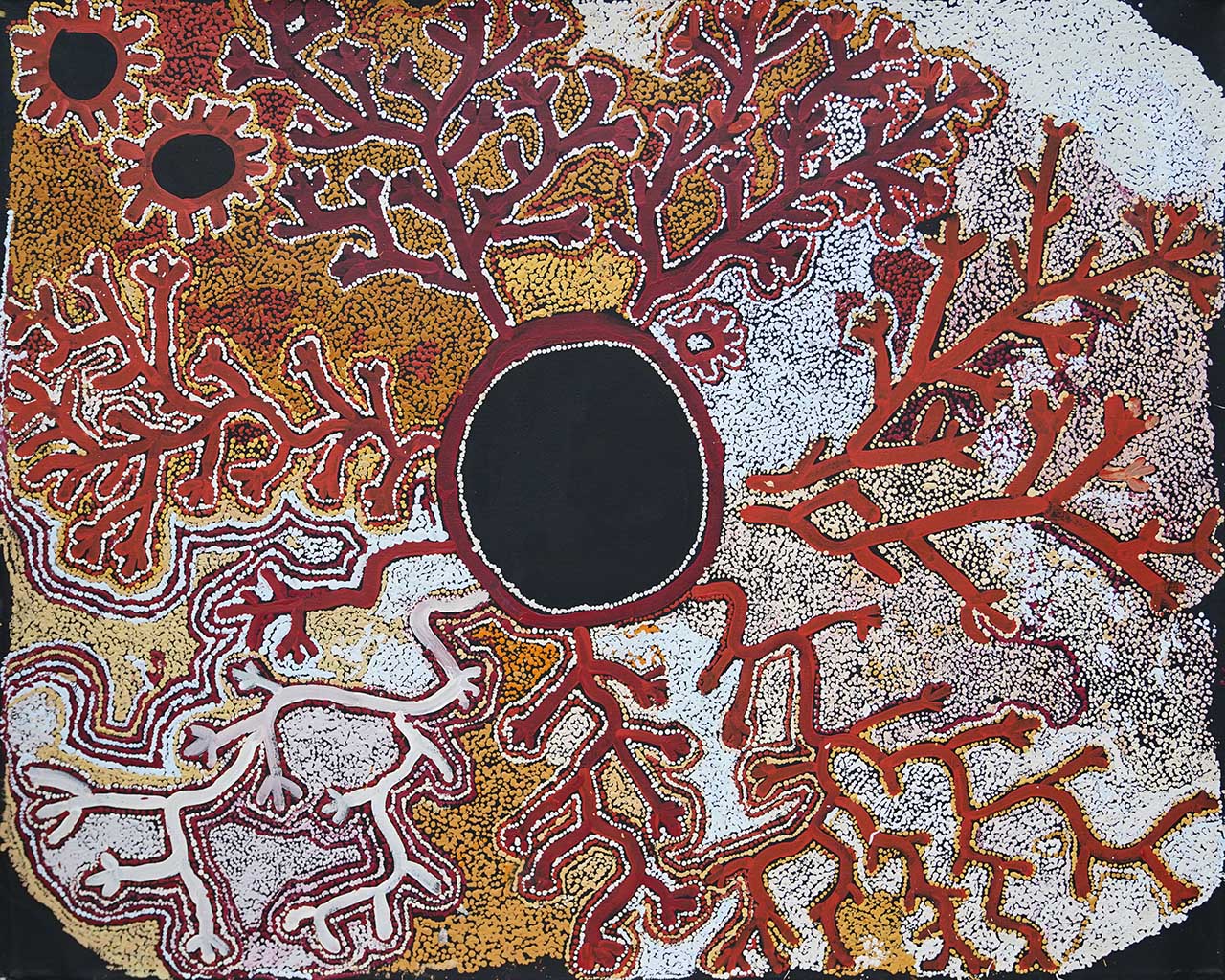
One of the features of each Spinifex exhibition is a collaborative work, where either the senior women or the senior men come together, to create their own unified painting of the various sites belonging to those artists. Now, this is a large painting, Kungkarungkalpa, more than two metres square, featuring the work of some of the leading women artists in the show. We're looking at a painting that is absolutely alive. It moves across their ancestral country, naming all the important sites belonging to the artists who've contributed to this work.
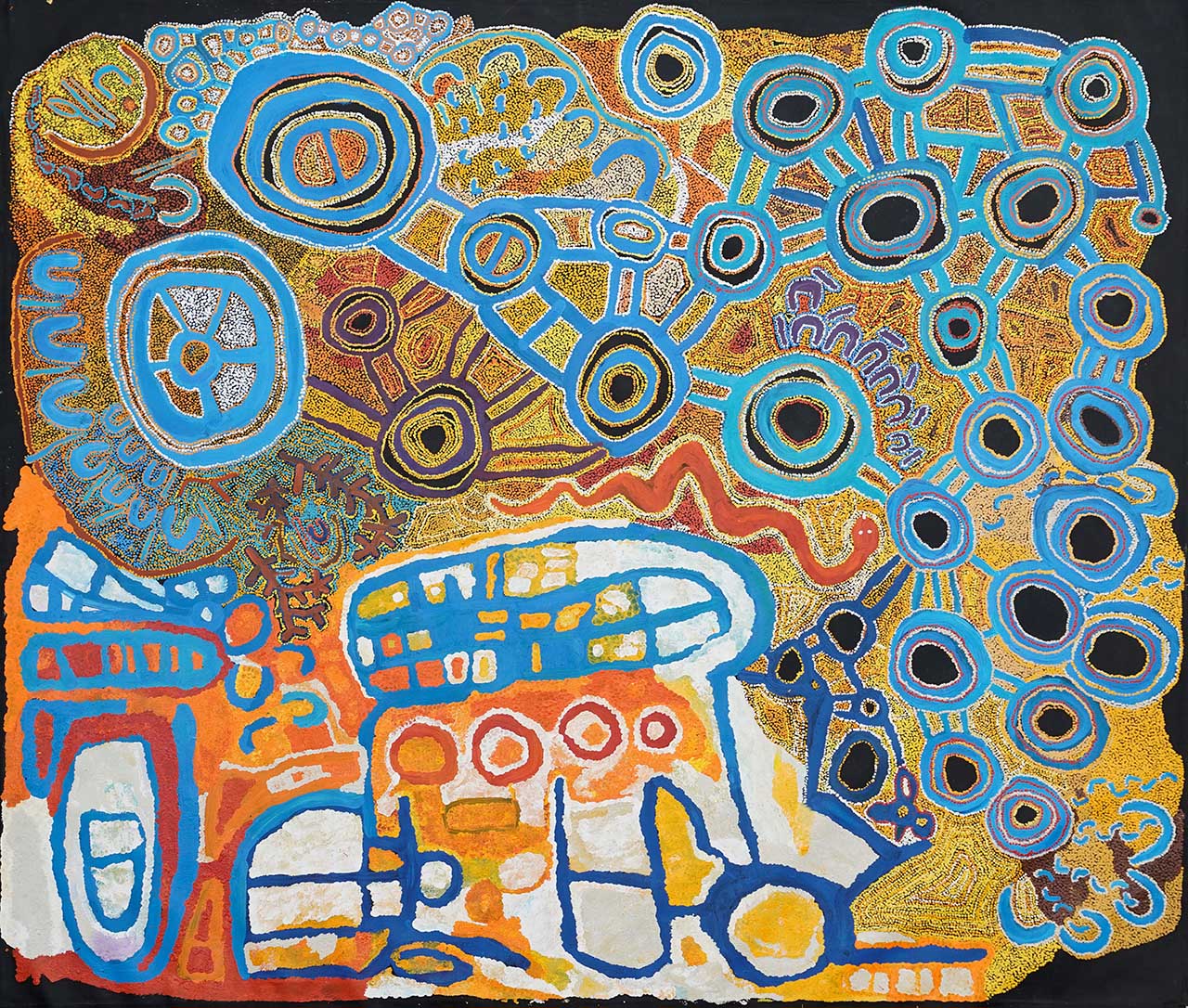
Some of the most distinctive works in this show are from Myrtle Pennington. All of Myrtle's paintings are about the country around Kanpala, which is the particular country from her family ancestry. She has a style that differs from everyone else in the exhibition. It's not dot work, there's really strong line work in blended colour, and a type of stippling effect where she's painting with the top of the brush. It's as though all the dots were blended together by the artist's brush moving quickly over the surface with very strong colours. She is working in a palette of glorious red tones here, she is such a distinctive artist amongst this group.
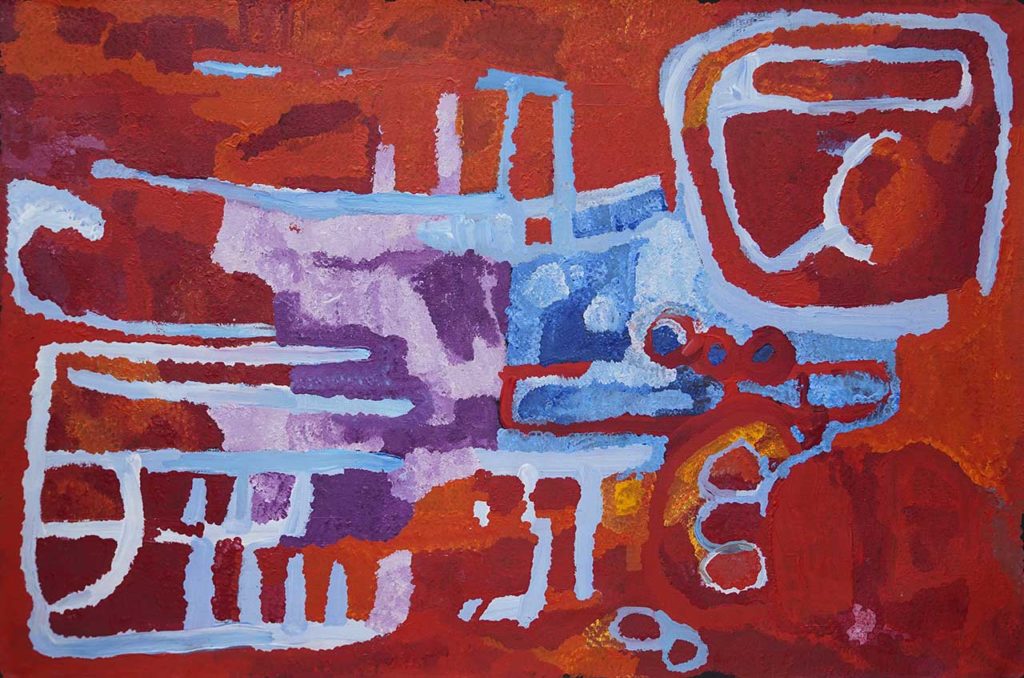
This next work captures the whole essence of that desert culture on the lands where Spinifex people live. Many of these artists are old enough to have lived the first nearly half of their lives on traditional country, untouched by any of the outside world's interventions. It wasn't until the 1950s that nuclear testing started happening out on their country and people were forcibly moved to the edges of their country.
They've now gone back their own volition, many decades later and visited every one of those sites that belong to their family. Ngalpinka Simms has captured all those incredible locations in an iconic handwriting style, a map making. She's creating these extraordinary little interconnected icons that represent the waterholes and the hills around each of the locations. It's a glorious map of highly significant places for the artist.
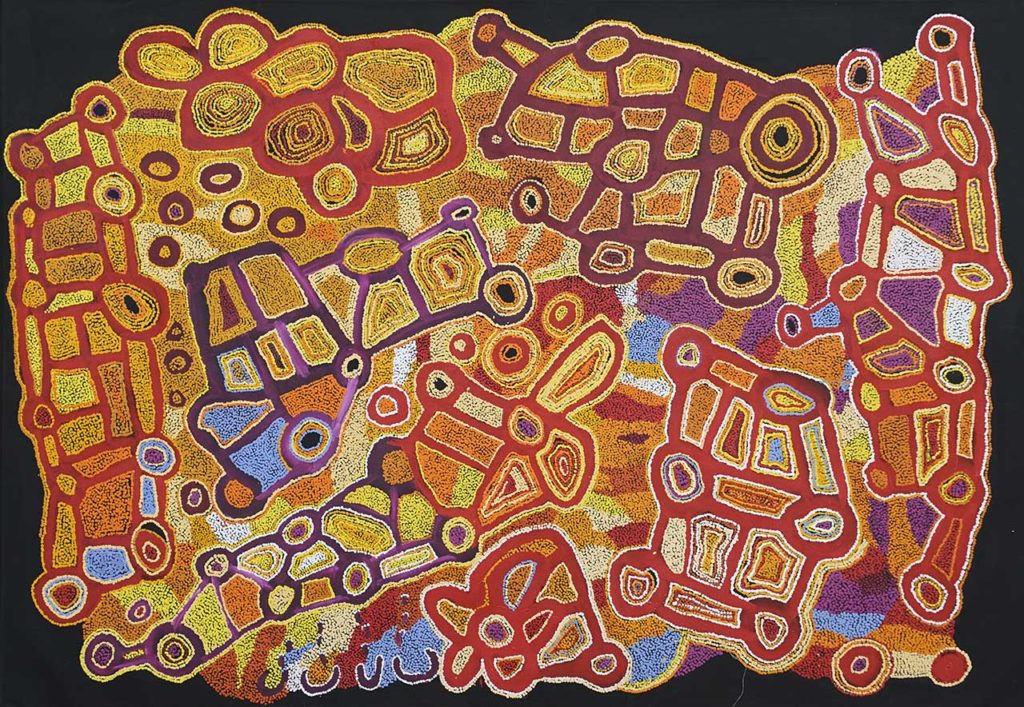
The Men's Collaborative is a two-metre painting showing the great Creation snake spirit that formed the waterholes in the desert. The men have been busy through 2020 - it's been an extraordinary year for the community because they've mostly been isolated from the rest of the world. The community is a particularly remote location at the best of times. The men have spent a lot of time on traditional country, meaning they haven't been at Tjuntjuntjara community. For that reason there is just one collaborative in the exhibition created by the group of men.
Often, the artists are able to spread out an enormous canvas more than two and a half metres across. They lay it out on a tarpaulin out on country and they all sit around it. Each artist is conjuring up their own part of the desert landscape that belongs to their ancestry. Together they work out the positioning of everything. They then commence to paint a tribute to the creation story that sits on their country. This example of the men's collaborative work is dominated by the creation snake form that is often represented in the men's stories from this region.
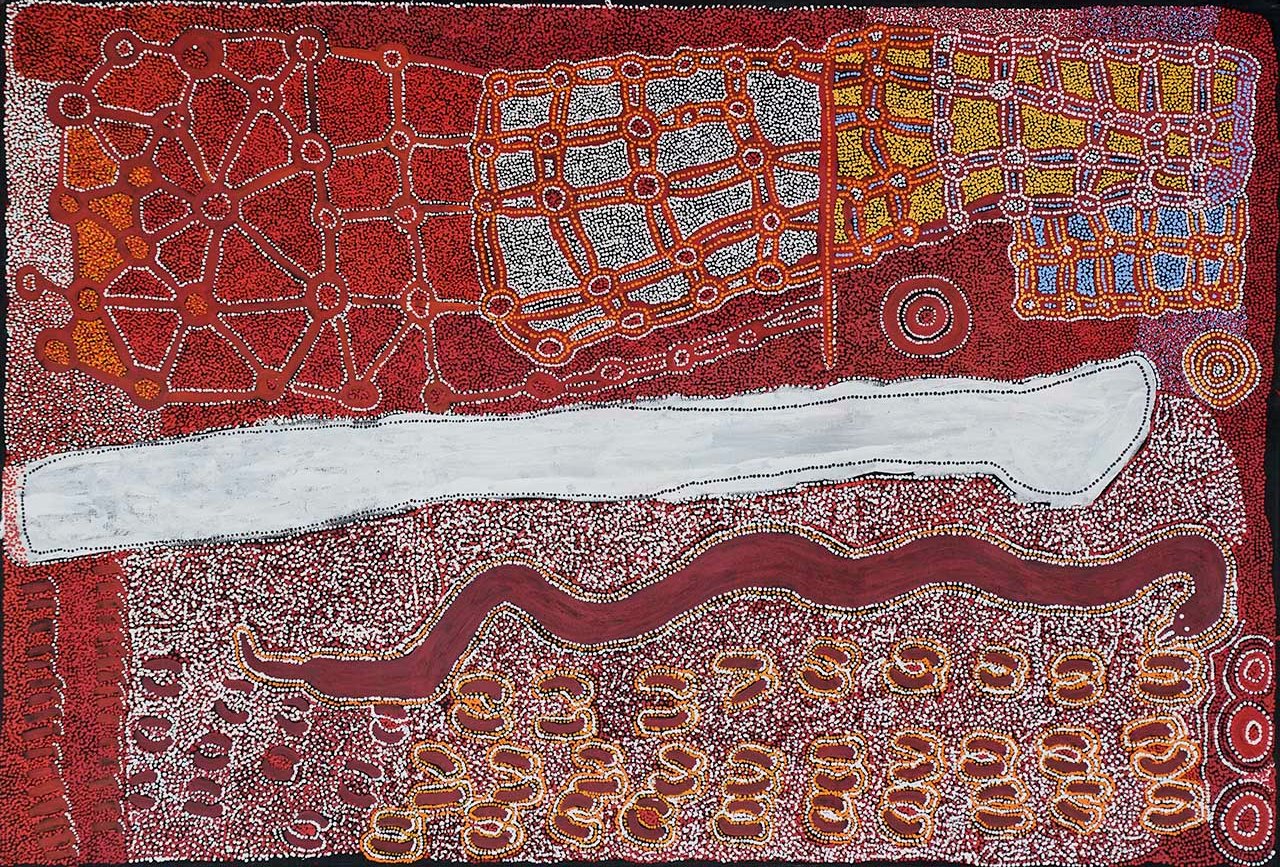
Timo Hogan has painted country around Lake Baker, to the north near Warburton. He has embedded the story of the salt lake with the Creation snake that formed the Country associated with the lake. This is about the journey of Ancestors through that country. Timo has become a bit of a phenomenon amongst the younger artists. He's not an older senior artist, but he has established himself as a major force in painting this country.
The power of this painting comes partly from its starkness, the monotone contrast of the salt lakes against the blackness of the surrounds. You'll notice the beautiful way those black and white dotted lines, those sinewy lines weave across the country. They are outlining the lakes and defining the snake that created all this country. This is the largest painting in the exhibition - it is 2.9 metres across, and it was even a handful to get into the gallery and up onto the walls. It is a most powerful work, in black and white with some ochre tones blended into the white of the salt lake to give it life.
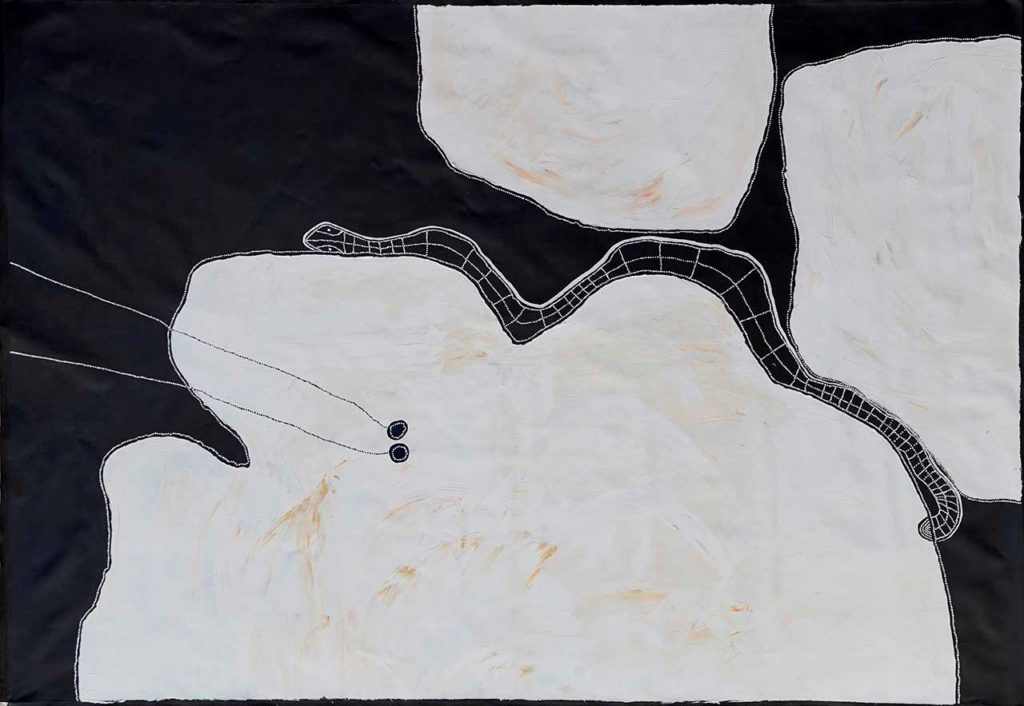
Ian Rictor is widely recognised amongst the people from Tjuntjuntjara as the last person to come out of the desert. He has very consciously stayed in his lands for as long as was physically possible and is also not inclined to leave the community. He tends to be comfortable on his own country. He has travelled to a few cities, but that was enough of an experience for him. He has also been a very productive painter. He's been in touch with the studio for the Spinifex Arts Project for a long while. He creates the most beautiful cellular depictions of waterhole and sandhill country. These compositions are structurally created with bold lines, offset with fine dot work that often in-fills the negative shapes created by the line work. These form the wonderful patterns that are a feature of the stunning compositions of Ian Rictor's traditional country.

